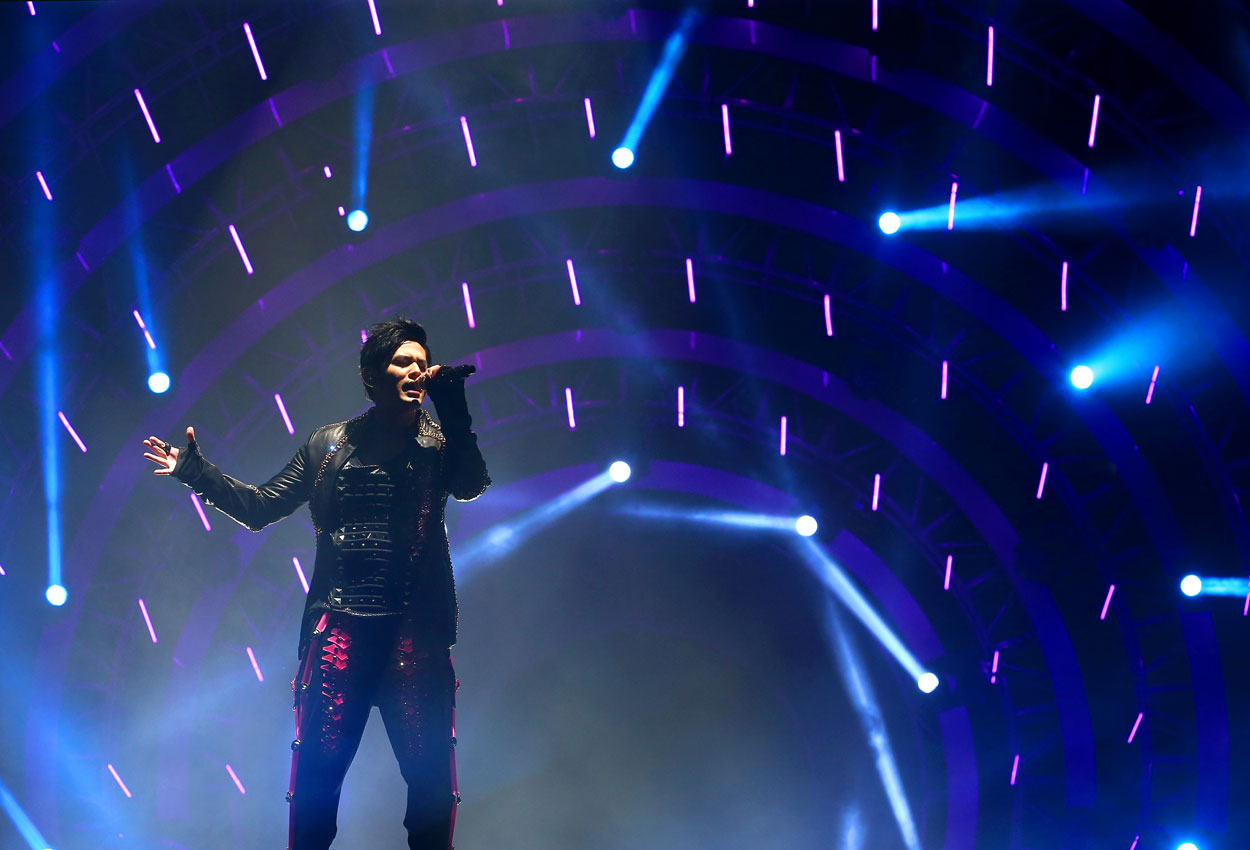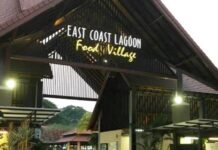Murky, muffled, echoey. These are some of the unflattering adjectives used to describe the sound at music concerts held at the National Stadium since home-grown music star Stefanie Sun held the first pop gig there on July 5, 2014.
Far from improving, the situation has become so bad that fans of Taiwanese singer Jay Chou petitioned for refunds after what they said was a disastrous concert there on Sept 3.
To be fair, not all comments about the sound at the National Stadium have been disparaging. Past reviews by this newspaper have included more positive comments such as “decent” sound quality at English-Irish boyband One Direction’s show and that the sound system was “clear enough” to make out the nuances in Taiwanese diva A-mei’s voice.
Still, the persistent negative feedback has raised several questions: Is the National Stadium an ultimately unsuitable venue for live music? Can its sound woes be fixed?
The venue management says it is not dedicated to music alone. A Singapore Sports Hub spokesman says: “The National Stadium’s characteristics, including amenities, location and, especially, capacity, make it a multipurpose venue with the ability to host large-scale, mega-stage concerts and shows in addition to sporting events.”
Ironically, the complaints about the venue’s sound is the latest in a litany of woes faced by the arena, which includes difficulty in getting the grass in the pitch to grow properly and protracted negotiations over rental cost for National Day Parade rehearsals. Many Singaporeans also seem to prefer the parade to be held at the Marina Bay Floating Platform because live audiences at the stadium cannot view highlights such as the flypast and parajumpers.
Sound engineers and concert producers The Straits Times spoke to offer a variety of technical solutions for concerts held at the stadium, noting that some may be unfeasible or too expensive.
For Chou’s recent concert, Multimedia Entertainment engaged sound engineers from abroad to provide advice on the sound system and set-up and said the quality of the speakers used had improved from those for 2014’s Opus 2 gig.
A spokesman for Unusual Entertainment, which was behind Sun’s and A-mei’s gigs, says: “Our local team supports the overseas tour team in the set-up and installation. However, the overall sound is controlled by the appointed sound engineers travelling with the tour. How to design and configure the sound system, taking into consideration the stage location, the show’s requirements and the audience capacity, is a challenge.”
Multimedia’s spokesman adds that other factors such as the building’s structure and design, height and material of the roof, arrangement of arena seats and safety requirement would determine the positioning of speakers.
He declined to reveal the technical specifications for Chou’s The Invincible gig or the amount spent on the sound component.
The cost of the set-up may be key. Mr Ngiam Kwang Hwa, 55, managing director of concert promoter One Production, puts it bluntly: “It’s not quite fair to say the National Stadium is a lousy venue. So far, unfortunately, most concert promoters haven’t done a wonderful job. Because of costs, they’re not investing enough in the sound.”
Mr William Lee, 46, project director at concert technical producer Showtec Group, says the addition of equipment could help to ameliorate the situation. He proposes using more delay towers – which help propagate sound to areas further from the stage – but noted that this might end up obstructing some views. “To have good sound, you need to sacrifice something.”
Another idea he has is to install overhead speakers, but the 2,000kg weight of each cluster has to be taken into consideration.
He estimates it would cost $80,000 to set up the sound at the Singapore Indoor Stadium, which has a capacity of 12,000, and at least three times that for the National Stadium, with a capacity of 55,000.
While there is anecdotal evidence that venues with larger capacities – from London’s Wembley Stadium (90,000) to the Beijing National Stadium (100,000) – are able to deliver good sound, the fact is that each venue comes with its own set of challenges. Singapore’s National Stadium, which opened in June 2014, has the largest freespanning dome structure with a diameter of more than 310m.
Veteran sound engineer Shah Tahir, 57, says of the venue: “It naturally has a lot of echo and reverb. The dome makes things worse as it’s permanent and the opening is only a small area. It’s a hard metallic surface and there’s no acoustical treatment of design.”
He notes there is no easy fix, given the structure contains cabling and other elements. The dome was meant to make the stadium an all- weather venue, but this has led to other problems. “This is the worst place to do live music for me.”
Mr Shah, who has been the audio consultant for the National Day Parade since 2009, says an “elaborate system” was used for this year’s event at the National Stadium. “It produced something acceptable that anybody seated anywhere can hear, but it’s not the pristine sound you get in a concert hall.”
To him, this is not something that can be plastered over with speakers. “Take the F1, for example. If the car is a fast car, but the track is not right, then it can’t perform. The speakers can produce the correct sound, but because the space is challenging, the result is bad sound.”
Sound engineer Alan Mathew, 38, who has worked on gigs by American group Backstreet Boys and Hong Kong singer Aaron Kwok, says that Singapore Sports Hub should not bear the brunt of the blame. He notes that the arena was designed for big events and the acoustics were “not bad”.
Moreover, he believes it is a concert organiser’s responsibility to bring in the right sound designer and sound system. “If you have only a small budget, get a smaller venue,” he says.
This was what happened with Taiwanese band Mayday’s gig here last month. Mr Ngiam brought their concert producer Baboo Ting, 43, to the National Stadium to scope out the venue during A-mei’s concert in January.
Mr Ting told The Straits Times that the sound problem was not insurmountable, “but you’d have to spend a lot of time, money and expertise to upgrade” the speakers.
Mayday are no strangers to mega venues, having performed at the Beijing National Stadium thrice. The set-up involved installing more than 220 speakers of the same brand. But Mr Ting had concerns over the availability of hardware in Singapore and whether there was a need to import equipment, which would lead to a spike in costs.
In the end, Mayday performed at the indoor stadium.
While there are alternatives to the National Stadium, they come with other considerations and potential problems.
American hard-rock band Metallica played for 40,000 at Changi Exhibition Centre in August 2013. While the sound quality did not appear to be an issue, crowd dispersal at the venue was a problem, with massive queues for taxis and a long wait to get out of the carpark.
But, as Mr Ngiam says, the more the National Stadium comes under fire for poor sound, the harder it is for promoters to hold events there as concertgoers equate the two.
Engineer Tay Chin Meng, 37, who attended Chou’s latest concert, says he would be “scared” to attend future gigs at the venue because of its poor acoustics.
Health coach Jennat Tan, 40, who caught Sun, A-mei and Chou’s concerts there, says: “It doesn’t do any justice to the artists, especially when they’d have practised hard for the concert… only to be criticised due to the bad sound system.”
Past concert reports
STEFANIE SUN 2014 KEPLER WORLD TOUR
When: July 5, 2014
Crowd size: 20,000
“As a venue for pop concerts, the National Stadium gets a mixed score. The overall sound had quite a bit of reverb to it and was rather murky though Sun’s distinctive timbre and evocative singing came through clearly enough.”
MARIAH: THE ELUSIVE CHANTEUSE
When: Oct 24, 2014
Crowd size: 12,000
“It did not help that Carey would ramble into the microphone, eating her words so you caught just the barest snippets of what she was saying. It could also be that high up in the stadium seats, the microphone sound did not travel very well as she spoke.”
OPUS 2 JAY 2014 WORLD TOUR
When: Dec 27, 2014
Crowd size: More than 30,000
“Unfortunately, the messy, murky sound never really cleared up. He mostly sounded echoey and, at times, was barely audible. The acoustics were particularly bad during Mr Magic, when other singers came on board, as some voices were swallowed up completely.”
ONE DIRECTION – ON THE ROAD AGAIN TOUR 2015
When: March 11, 2015
Crowd size: 33,000
“While the sound quality at the National Stadium is decent, the screams from the fans drown out the group’s singing for a good part of the show.”
SING50 CONCERT
When: Aug 7, 2015
Crowd size: 41,300
“While there were complaints about the acoustics – just like there were for Jay Chou’s concert at the same venue – it was clear the audience had a great time.” “Pop queen Stefanie Sun performed a medley of some of her best-known hits and tried to get the crowd going but was hampered by the muffled sound.”
AMEI | AMIT UTOPIA WORLD TOUR
When: Jan 9, 2016
Crowd size: 20,000
“While she sounded noticeably raspier, her voice still retained its warmth and power. It started to get a little ragged, though, towards the end and the strain of the high notes began to show.
“This also meant that the sound system was clear enough to make all this out; the poor acoustics that plagued the concert by Mandopop king Jay Chou at the same venue in December 2014 did not surface.”
MADONNA REBEL HEART TOUR 2016
When: Feb 28, 2016
Crowd size: 25,000
“Apart from the complaints about the venue’s bad sound quality, which also plagued other concerts there, fans also said they could barely see their idol – because the jumbo video screens on stage were not jumbo enough for the large venue and also because of ticketing and seating issues.”
THE INVINCIBLE JAY CHOU CONCERT TOUR 2016
When: Sept 3, 2016
Crowd size: 40,000
“At least, the problem of murky sound that plagued his previous concert at the same venue did not resurface. From where the media were seated – centre and near the front – the sound was a little echoey at times, but not enough to be ruinous.”

This article was first published on September 14, 2016.
Get a copy of The Straits Times or go to straitstimes.com for more stories.














